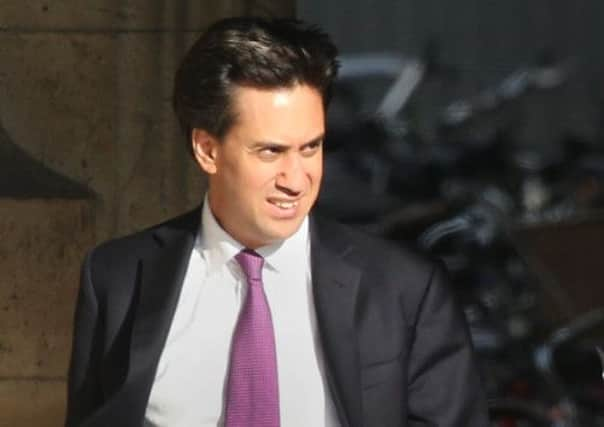Leaders: Labour | Lads’ mags


With union passions running high and searching questions still to be answered over the behaviour of Unite in the candidate selection process in Falkirk, it will be a political test akin to tap dancing on Vesuvius.
The Labour leader hopes to kick the issue into touch with his proposal for a special conference on the issue next spring. But this is hardly likely to staunch questions ranging from the influence of the trade unions on Labour to the messy unresolved legacy of the Falkirk affair.
Advertisement
Hide AdAdvertisement
Hide AdAlready the controversy looks set to dominate the TUC conference. Yesterday, Dave Prentis, general secretary of public sector union Unison, warned Labour faces an election meltdown similar to that experienced by its Australian counterpart unless it stops its “squabbles” with the unions.
The Labour leader says he is determined to remove the automatic affiliation fees paid by millions of union members to ensure that only those with an active interest are involved. He concedes this will cost Labour much of its £4.2 million funding from the unions. But he argues it will make the party stronger. He gave this reform commitment at the height of the row over candidate selection in Falkirk, when party officials submitted concerns over Unite’s involvement to the police. Now this reaction has come back to haunt him.
The party says there was no evidence of wrongful behaviour, leaving the union apparently exonerated and Mr Miliband, whose election to the party leadership was due to trade union support, looking isolated and vulnerable to charges of premature and ill-considered reaction. The general secretary of Unite, Len McCluskey, said yesterday he was “delighted” that the union had been “vindicated” over Falkirk vote-rigging allegations.
Few believe this to be the end of the affair. Mr Prentis has dismissed Mr Miliband as “living in cloud cuckoo land”. Others have been even more forthright, deriding Mr Miliband’s proposals as the product “of a bad night out”. There was always the sense that Falkirk only catalysed an issue that has simmered inside Labour for years and which the Blair era failed to address. Now it looks as if the Labour leader is boxed in by his previous commitment, and has no credible means of retreat.
Either way, it looks costly for both him and Labour. Voters are unlikely to be appeased by the results of an internal party investigation that nothing was untoward at Falkirk. If that is the case, why has Unite’s preferred candidate withdrawn from the fray? And why have key witnesses withdrawn their evidence? Much has still to come out. And it has opened up larger and more serious questions over union influence. A fudge by Mr Miliband, now or at a special conference, will not make this issue go away.
Lads’ mags ban far from co-operative
So-called ‘lads mags’ such as Nuts and Zoo may argue with some justification that they are not pornographic or that their contents are not sexually extreme. So why should they conform to the strictures of the Co-op to have the magazines wrapped in sealed ‘modesty bags’ putting them on a par with far more provocative and extreme material? That the Co-op’s move to take the magazines off the shelves coincides with a Scottish government statement to push ahead with plain packages for cigarettes will cause some to wonder that the nanny state is sweeping all before it. Can steel shutters to hide alcohol displays be far behind?
The Co-op’s move may be a consequence of boundaries being pushed to the limit. But who sets the boundaries? And what are the criteria by which some depictions are judged offensive and others not? There are problems when no boundaries are set; there are also problems when they are introduced. Where is the dividing line exactly between what is acceptable and what is not? That the covers of lads mags feature women only partially clothed or in suggestive poses would bring the shutters down on most art galleries as well as much of the ‘red top’ press.
But there is little doubt that public attitudes are changing. There is an evident retreat from the permissive era that held sway in the 1960s and 1970s. We may not be going at full throttle back to the Victorian era. But such repression brought its own furtive culture and neuroses. The Co-op may have done better to arrive at a more subtle arrangement of titles rather than an outright ban, a route that it may find raises as many problems as the ones it has sought to banish.